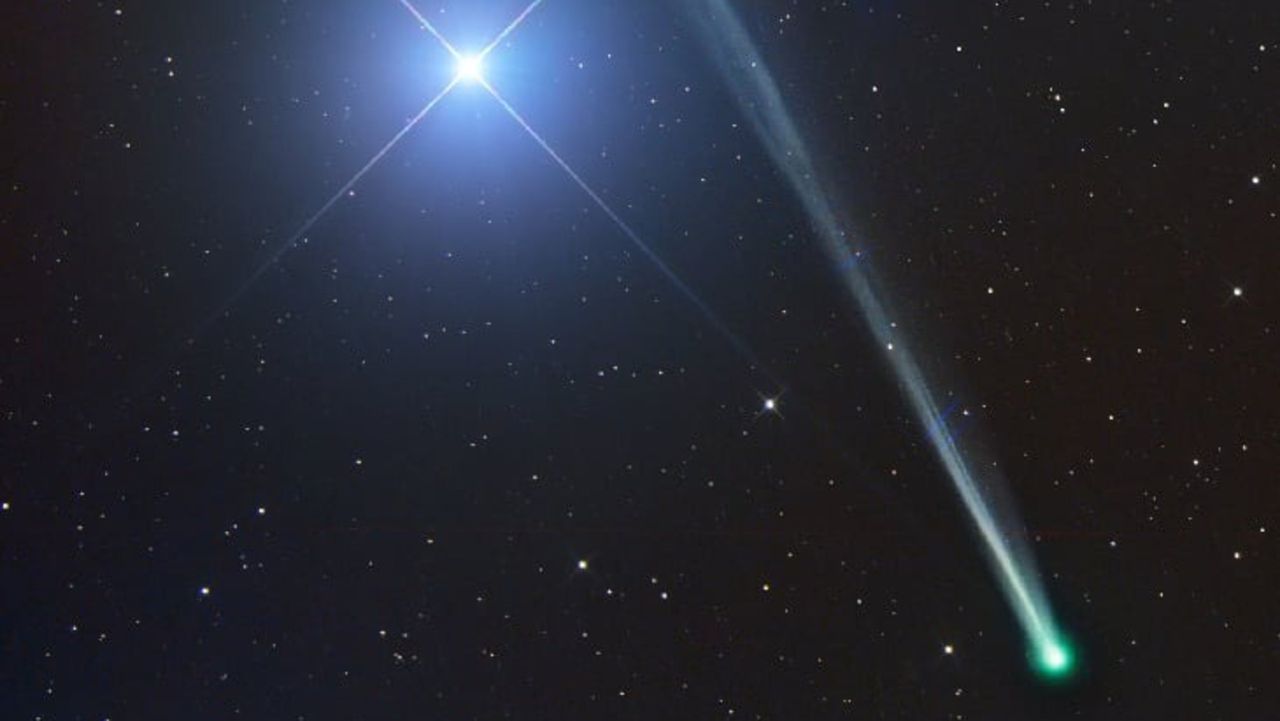A new comet is set to illuminate the October night sky, offering stargazers a potential spectacle. Discovered on September 10, 2023, by Ukrainian amateur astronomer Vladimir Bezugly, Comet C/2025 R2 (SWAN) has significantly brightened and is expected to reach its closest approach to Earth on October 21, 2025.
As the comet approaches the sun, the heat causes the frozen materials in its nucleus to sublimate, transforming from solid to gas. This process creates a gaseous shell that the solar wind disperses, forming a long tail of dust and gas that reflects sunlight. This cosmic display may become visible to the naked eye, depending on its brightness.
The comet reached perihelion, its closest point to the sun, on September 12, 2023, passing approximately 47 million miles from the sun, about half the average distance between Earth and the sun.
Understanding the Brightness of C/2025 R2 (SWAN)
The brightness of celestial objects is measured using a scale known as magnitude. The scale is inverse, meaning that a lower number indicates a brighter object. For reference, the brightest stars have a magnitude of around +1, while a full moon is rated at -13, and the sun shines at -27. Recent data from the Comet Observation Database (COBS), managed by the Crni Vrh Observatory in Slovenia, indicates that C/2025 R2 (SWAN) currently has a brightness of magnitude 5.6. Under optimal dark conditions, this means it may already be visible as a faint naked eye object, as the human eye can detect objects with a magnitude lower than +6.
Though it may be challenging to spot without aid, C/2025 R2 (SWAN) will be much more accessible through binoculars or a telescope.
Viewing Opportunities Throughout October
Stargazers can observe Comet C/2025 R2 (SWAN) in the evening sky throughout October. The best viewing time will be shortly after sunset, before it sinks below the south-southwest horizon. On October 16, 2025, the comet will be located about 5 degrees above and to the left of the star Xi Serpentis in the constellation Serpens. For those unfamiliar with the night sky, using a stargazing app can facilitate locating the comet.
In the following week, the comet will pass above the well-known “teapot” asterism in the constellation Sagittarius, moving through the stars of the constellation Scutum. By the end of the month, C/2025 R2 (SWAN) will be visible above the southern horizon, situated between the bright stars Sadalmelik and Sadalsuud in the constellation Aquarius, with a half-lit moon shining below.
Astronomers and enthusiasts alike are encouraged to prepare for the comet’s appearance. Those looking to capture images of this celestial wanderer can refer to guides on using DSLR cameras for astrophotography.
As stargazers gear up for this cosmic event, sharing images of Comet C/2025 R2 (SWAN) is encouraged. Captured photos, along with comments, can be sent to [email protected] to be featured among fellow astronomy enthusiasts.
With its potential for a stunning display, Comet C/2025 R2 (SWAN) promises to be a highlight of the October sky.







































































